What to do if eggplant flowers fall off in a greenhouse and why does this happen?
Eggplant is a vegetable crop that requires special care. She is very picky and quickly responds to environmental changes. In a greenhouse it is easier to create an optimal microclimate for eggplants, so here they are less likely to lose leaves and ovaries. If this happens, it is important to understand the reasons that led to this and quickly eliminate them so as not to lose the harvest. Let's look at why eggplant flowers and leaves fall off in a greenhouse and what to do about it.
Why do eggplants shed flowers and leaves in a greenhouse?
There are many reasons that lead to the fall of leaves and flowers in eggplants. Let us consider in detail the main ones.
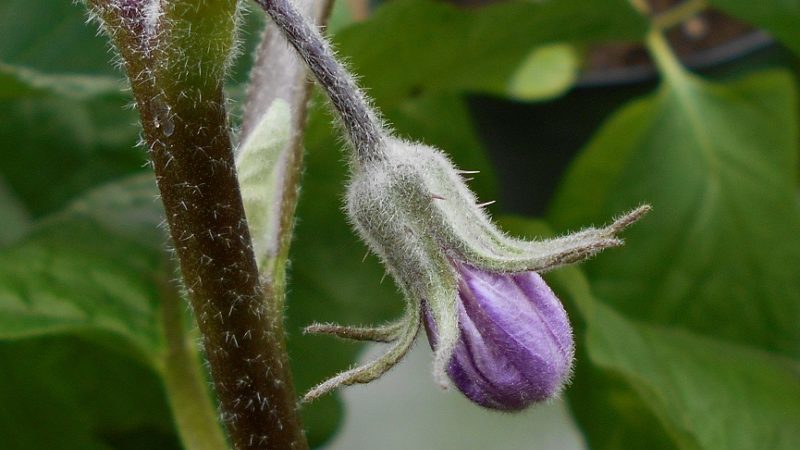
Lack of pollination
Most often, flowers fall off in vegetables grown in a greenhouse due to lack of pollination. Eggplant is a self-pollinating plant, but moving pollen from one bush to another requires wind, which is not available in a greenhouse. Unpollinated flowers do not form an ovary, fade, dry out and fall off.
Another reason why pollination does not occur is the loss of pollen's ability to fertilize. This happens due to inappropriate temperature in the greenhouse - the pollen becomes sterile and does not germinate. Optimal values for good pollination are +20…+30°С.
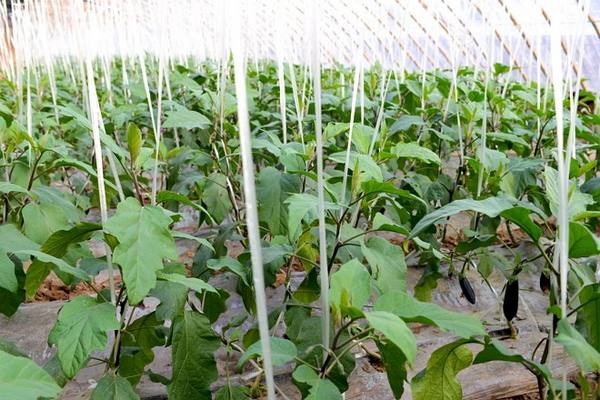
Unsuitable microclimate
To get an excellent harvest of eggplants, it is important to strictly monitor the microclimate in the greenhouse, because any changes in environmental parameters immediately affect the health of the crop.
To prevent the flowers from falling off and the yield from decreasing, in addition to the temperature, the following parameters are controlled:
- Air humidity. The plants have very heavy pollen. When it gets damp, the flowers come off, which greatly affects the amount of harvest. The optimal humidity is no more than 65%.
- Drafts. A strong draft during ventilation is sufficient stress for the plant, as a result of which it loses its inflorescences.
- Lack of lighting. Eggplant is a light-loving crop and requires direct sunlight to grow well. Therefore, it is advisable to grow vegetables in glass greenhouses, which, unlike film and polycarbonate ones, do not interfere with the penetration of sunlight.
Suitable varieties and hybrids for growing in a greenhouse are Robin Hood, Bull's Heart F1, and Purple Miracle F1, which are easier to tolerate lack of lighting.
Nutrient deficiencies
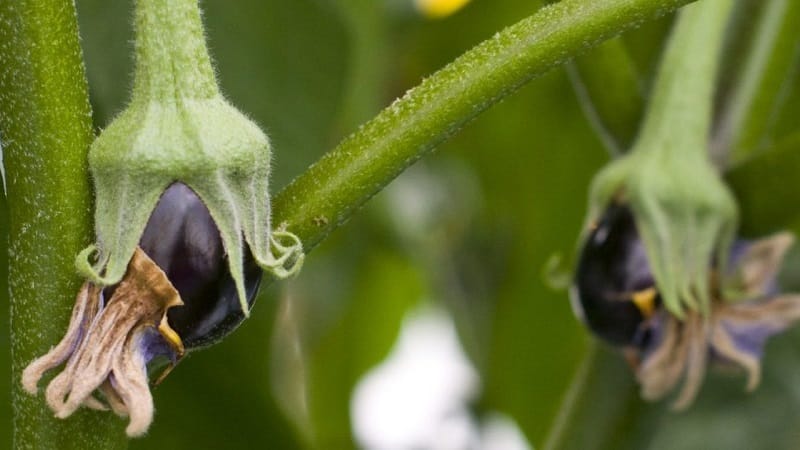
Fallen flowers and leaves signal a deficiency or excess in the soil of mineral elements such as boron, nitrogen, phosphorus or potassium. Eggplant requires these substances for growth and fruiting.
With boron deficiency, stems and leaves become brittle, crop growth slows down, and flowers, fruits and leaves are deformed.
Nitrogen is required by eggplant when gaining green mass: the larger the leaves, the more the plant absorbs sunlight. However, with an excess of the element, the bush actively grows, which has a particularly adverse effect on the formation of flowers.
Attention! Oversaturation of the soil with any of the mineral elements leads to wilting and falling of leaves and flowers.
Potassium promotes the formation of large buds and fruits, and its lack causes the inflorescences and leaves to fall off.When there is enough phosphorus in the soil, eggplants experience maximum vigor and growth.
Improper care
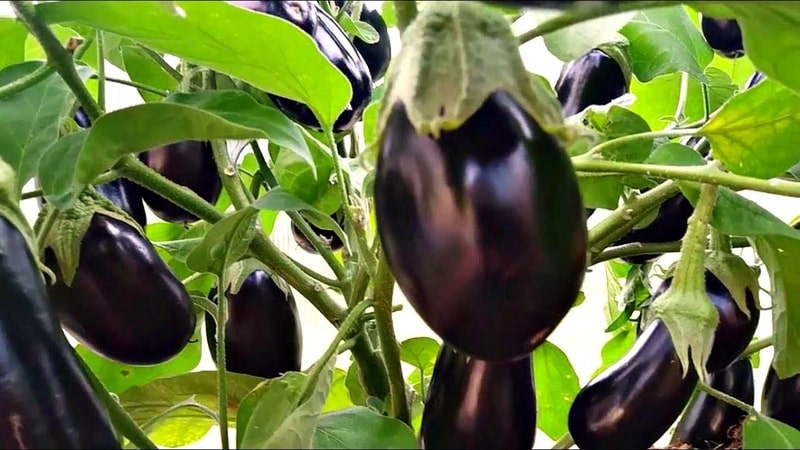
Improper care also leads to eggplant dropping leaves and flowers.
The main mistake that many gardeners make is improper watering. Since the roots of the crop are very sensitive to temperature changes, only warm water is used for irrigation.
The second mistake due to which the bush loses leaves and inflorescences is irregular watering.. Do not allow the soil to become too dry or waterlogged.
Acidity also needs strict control. The culture prefers neutral soils. In acidic soil, eggplant does not form ovaries well, and some of the leaves and flowers will fall off. The optimal soil acidity for plants is 6–6.5 pH.
Read also:
Recommendations for caring for eggplants in a greenhouse
Spider mite

The greatest threat to eggplants during the flowering period is the spider mite. Its activity weakens the crop and leads to poor formation of ovaries, which affects the quality and quantity of the harvest.
It’s easy to understand that a pest has appeared on the plant: the leaves are covered with a marble pattern and cobwebs on the back side. If immediate measures are not taken, the mite will destroy all plantings.
Treatment options
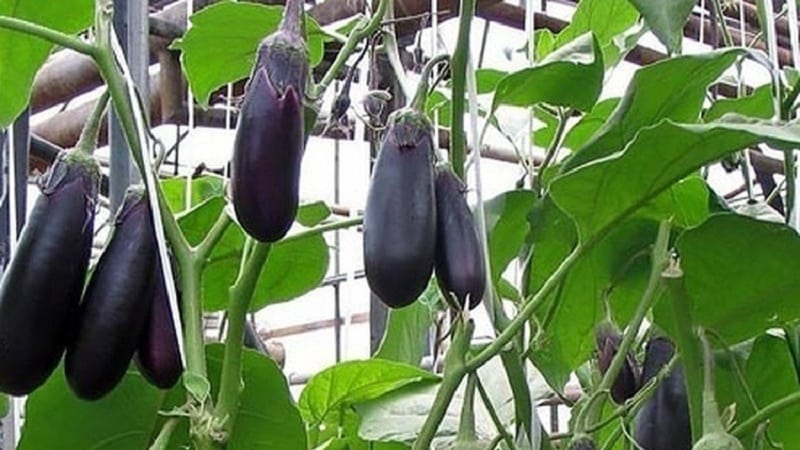
The first thing you need to do if the eggplant leaves and flowers begin to fall off is to eliminate all violations of the rules of agricultural technology and inspect the bushes, identifying possible pests. If traces of their vital activity are detected, plants are treated with insecticides (“Fufanon” or “Fitoverm”), strictly following the instructions on the package.
If there are no traces of pests, the bushes are sprayed with 0.05% boric acid solution. This procedure will stimulate the formation of ovaries and flowers.
Important! Spraying with boric acid cannot be carried out if leaves and flowers fall off immediately after feeding the eggplants with boron.
If the flowers have fallen due to lack of pollination, it is carried out manually using a brush or cotton swab. You can attract pollinating insects by placing containers of sweet water in the greenhouse.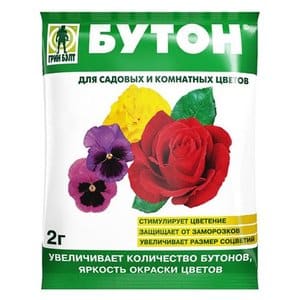
If it is not possible to provide plants with conditions favorable for pollination, ovary stimulants are used (“Bud”, “Ovary”, “Ivin”, etc.). To prevent the pollen from drying out and sticking together, the flower stalks are shaken regularly.
Eggplants that shed leaves and flowers due to lack of light and heat are fed with 0.07% calcium nitrate solution. The product is applied at the root.
If the reason for dropping leaves and lack of ovaries lies in excess nitrogen in the soil, apply phosphorus-potassium fertilizer or ash (1.5–2 tbsp per 1 m²).
Weakened plants that have been exposed to any type of stress (drafts, lack of light, pest attacks) are treated with immunomodulators such as "Epin-Extra" or "Ecosil".
Prevention measures
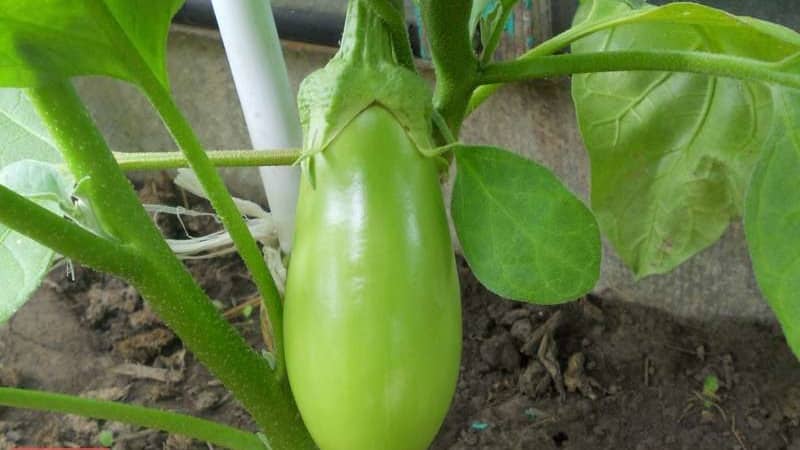
To avoid having to save eggplants from death, we must not forget about preventive measures:
- periodic replacement of the top layer of soil in the greenhouse;
- liming if the soil is acidic;
- planting bushes at a distance of at least 60 cm so that the leaves do not darken each other;
- temperature control in the greenhouse;
- careful, draft-free ventilation of the greenhouse;
- air humidity control;
- Irrigation of plants during the flowering period, 2 times a week, 12 liters per 1 m²;
- Regular pinching of bushes so that the fruits receive light.
During the flowering period, plants are given twice as much phosphorus and potassium as during the growth period. Twice, with a break of 10 days, foliar feeding is carried out with a 0.05% solution of boric acid and 0.01% magnesium sulfate.
Read also:
Conclusion
There are many nuances in growing eggplants, but strict adherence to the recommended rules of agricultural technology is the key to obtaining a large and high-quality harvest. If a plant's flowers and leaves fall off, first of all check the regularity of watering, the correct application of fertilizers, the microclimate in the greenhouse and the presence of pests.
If errors in care are corrected, the culture will be restored.